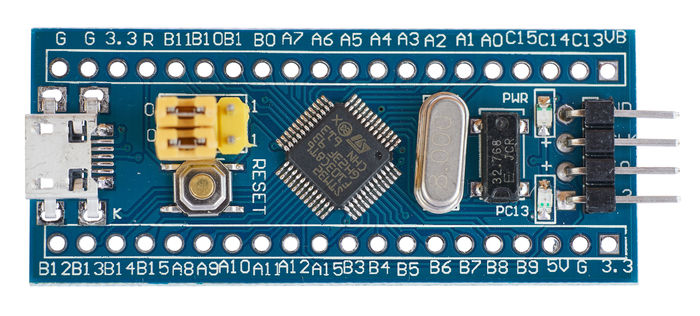
In the previous guide (here), we saw how to configure a GPIO pin as output. In this guide, we shall configure another pin an input to read from push button.
In this guide, will cover the following:
- Input modes.
- Develop GPIO Input driver.
- LED control using push button.
- Demo.
1. Input modes:
GPIO input modes include
- high impedance
- pull-up
- pull-down
Floating, High Impedance, Tri-Stated
Floating, high impedance, and tri-stated are three terms that mean the same thing: the pin is just flopping in the breeze. Its state is indeterminate unless it is driven high or low externally. You only want to configure a pin as floating if you know it will be driven externally. Otherwise, configure the input using pulling resistors.
Pull Up/Down
If an input is configured with an internal pull-up, it will be high unless it is externally driven low. Pull-down inputs do the opposite ( they’re low unless driven high).
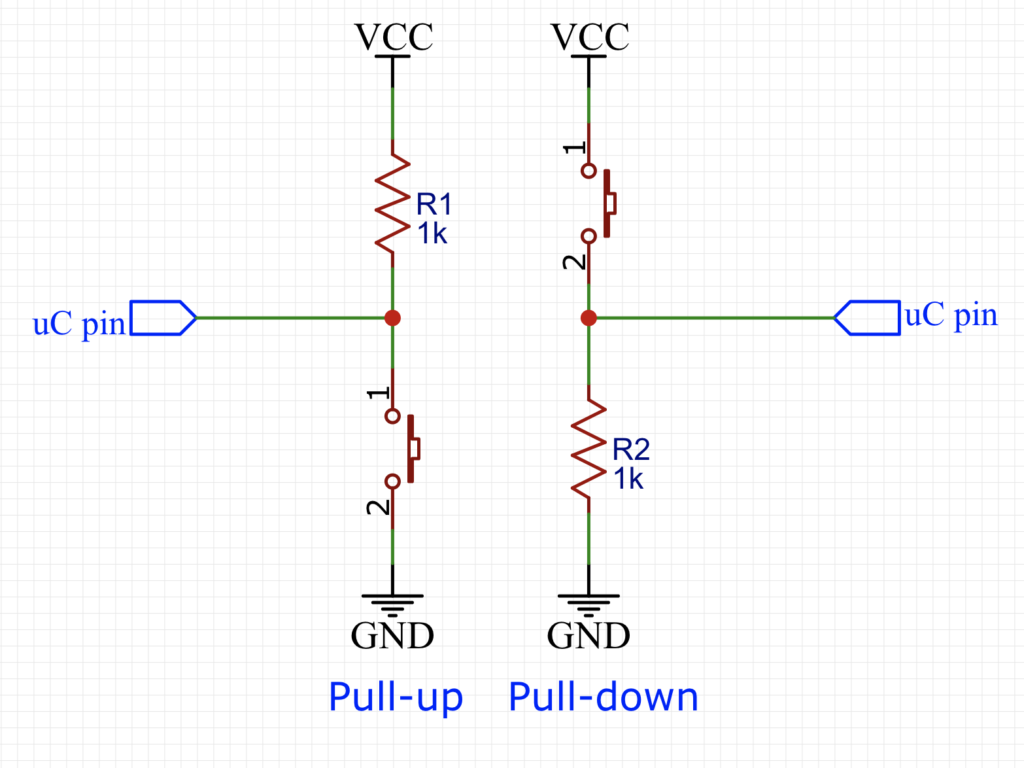
2. Developing GPIO Input Driver:
In this guide, the push button is connected to PA1 and LED to PA0 as following:
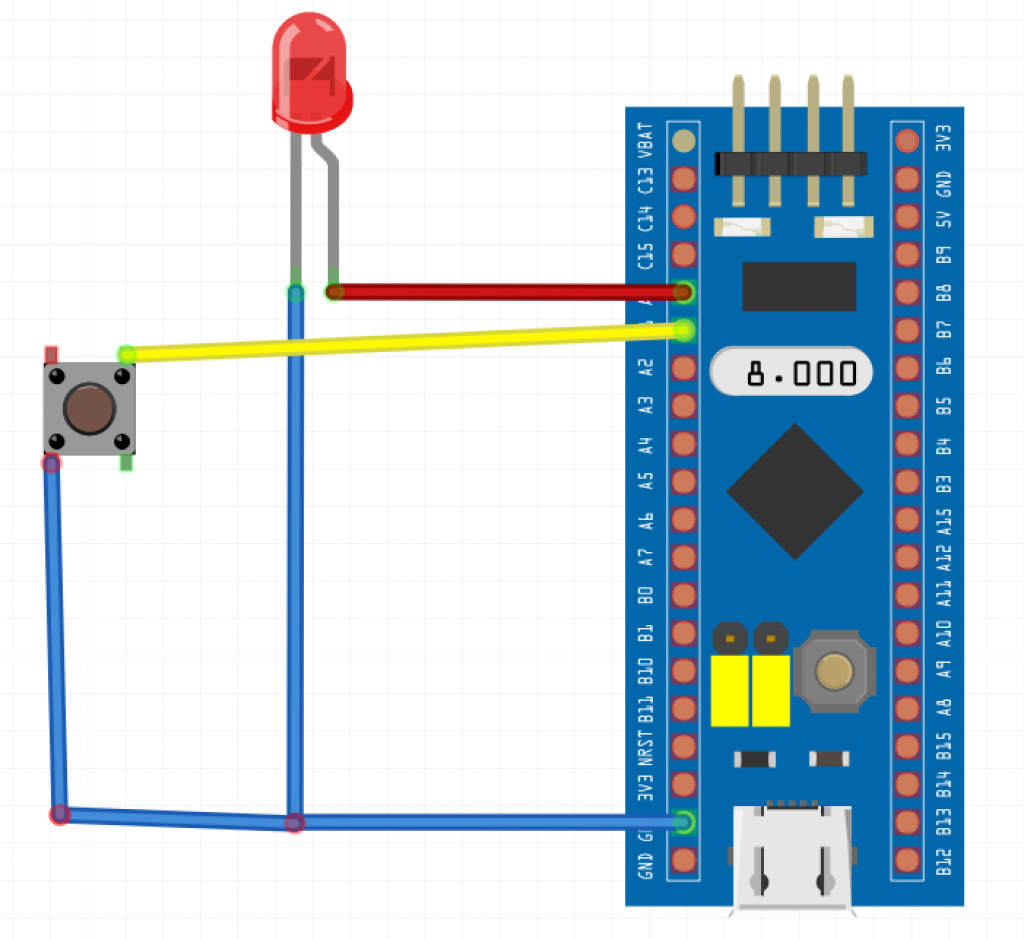
In order to configure PA1 to input mode the following shall be set:
- Mode to be input mode.
- Configuration to be Input with pull-up / pull-down.
- Enable pull-up resistor.
To set the pin to input mode, the mode shall be set to 0 and configuration to be input with pull-up / pull-down:
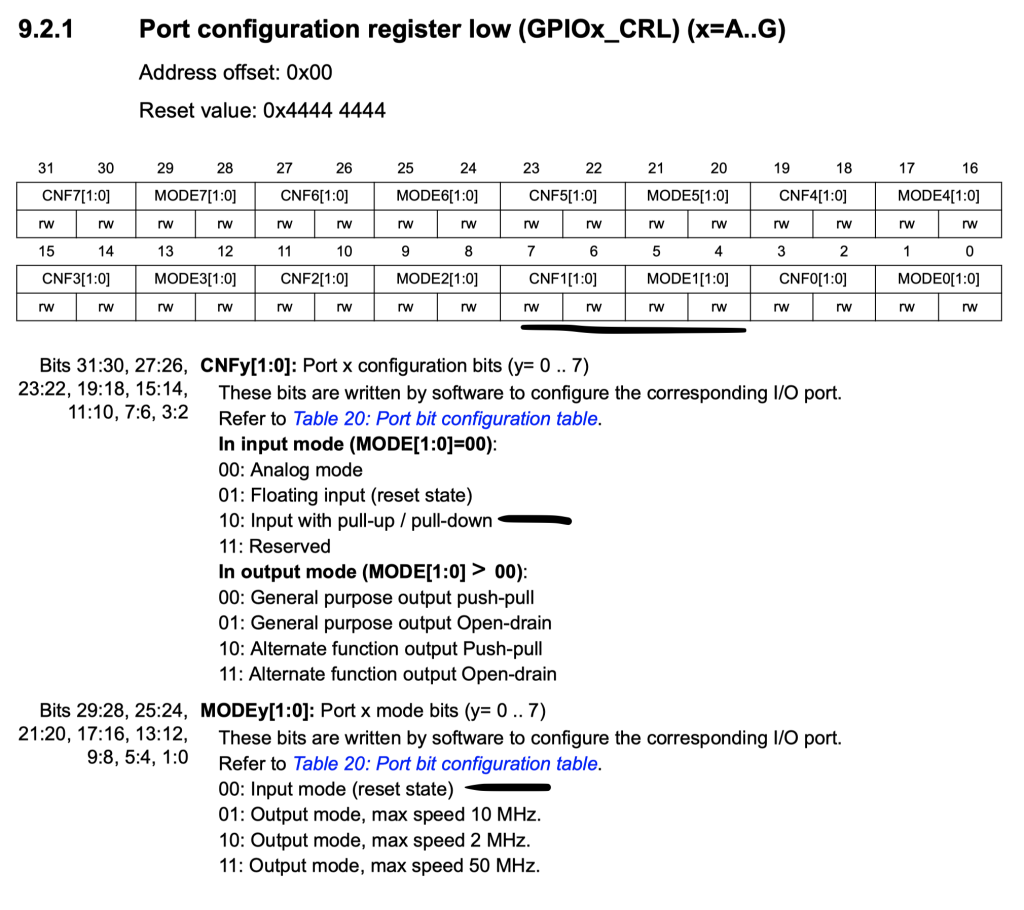
GPIOA->CRL&=~GPIO_CRL_MODE1; GPIOA->CRL|=GPIO_CRL_CNF1_1; GPIOA->CRL&=~GPIO_CRL_CNF1_0;
In order to activate pull-up or pull down resistor within the GPIO, the ODR register shall be set as following:
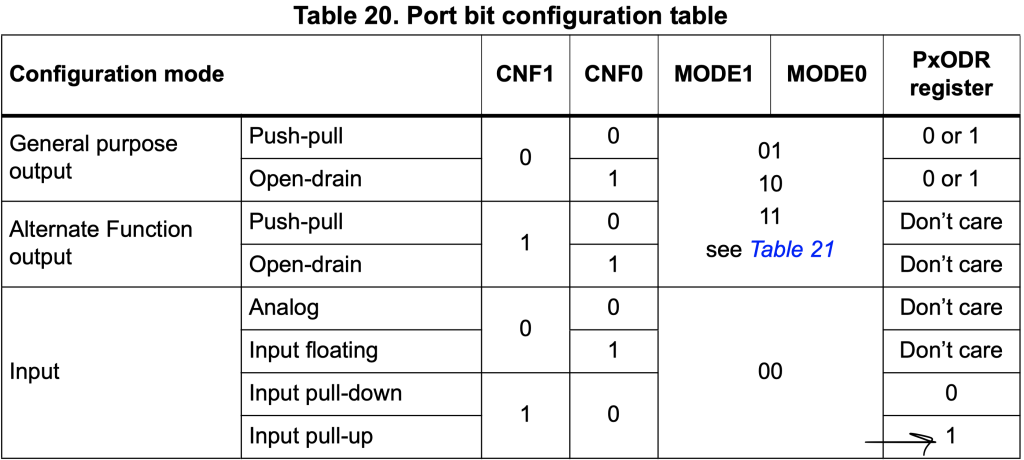
- ODR1 set to 0 means pull-down.
- ODR1 set to 1 means pull-up.
Hence, by setting ODR1 to 1, the internal pull-up will be activated:
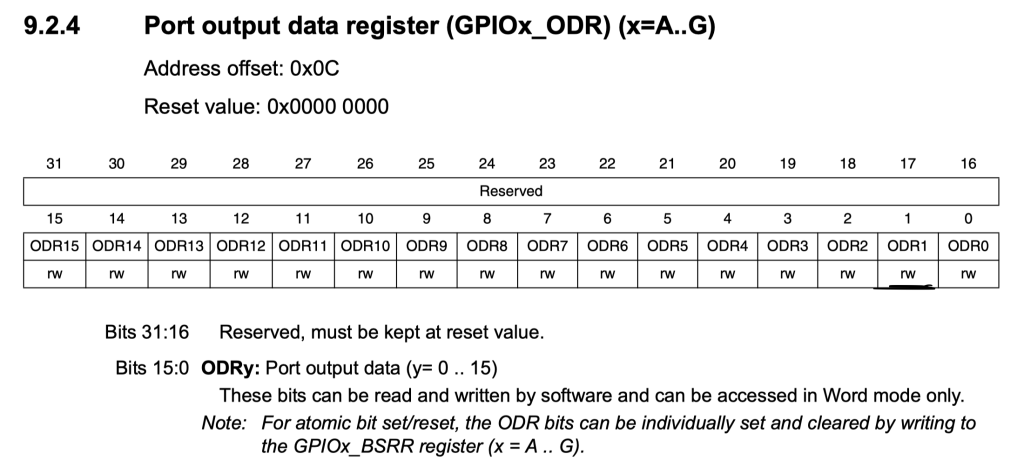
GPIOA->ODR|=GPIO_ODR_ODR1;
3. LED control using push-button:
The control algorithm when the push button is pressed, turn on the LED, when released, turn off the LED.
Since the push-button configuration is pull-up, when the push-button is pressed, the respective bit is 0 and when released, the bit is 1.
To read the push-button, we need to read IDR register and bit named IDR1:
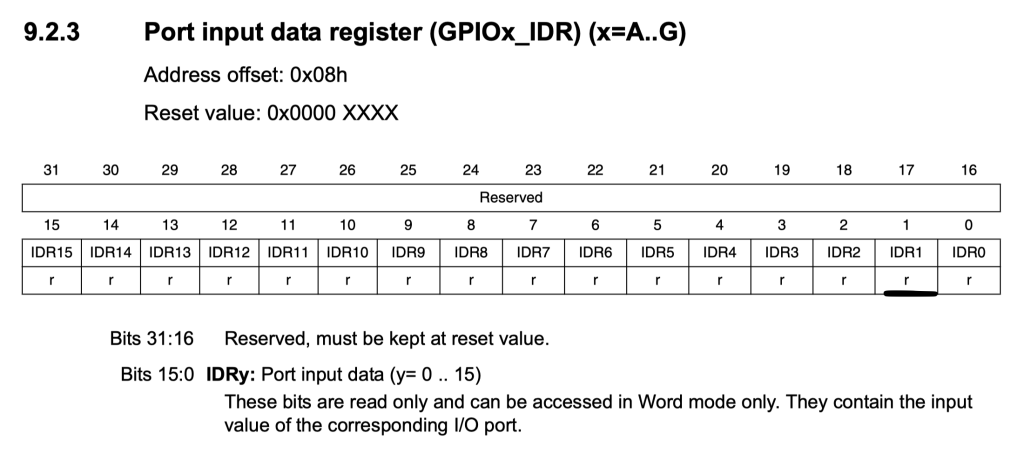
Hence, the code for controlling the LED:
if((GPIOA->IDR&GPIO_IDR_IDR1)==0){
GPIOA->BSRR=GPIO_BSRR_BS0;}
else {
GPIOA->BSRR=GPIO_BSRR_BR0;}Hence, the entire code as following:
#include "stm32f1xx.h"
int main(void)
{
RCC->APB2ENR|=RCC_APB2ENR_IOPAEN;
/*Configure PA0 as output*/
GPIOA->CRL|=GPIO_CRL_MODE0;
GPIOA->CRL&=~(GPIO_CRL_CNF0);
/*Configure PA1 as input*/
GPIOA->CRL&=~GPIO_CRL_MODE1;
GPIOA->CRL|=GPIO_CRL_CNF1_1;
GPIOA->CRL&=~GPIO_CRL_CNF1_0;
GPIOA->ODR|=GPIO_ODR_ODR1;
while(1)
{
if((GPIOA->IDR&GPIO_IDR_IDR1)==0){
GPIOA->BSRR=GPIO_BSRR_BS0;}
else {
GPIOA->BSRR=GPIO_BSRR_BR0;}
}
}
4. Demo:
Happy coding 🙂
Add Comment